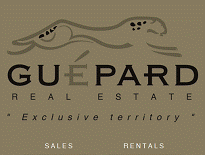Romania Mining Report 2010
After a decade of year-on-year (y-o-y) volatile growth and contraction, Romania’s mining industry will outpace the economy from 2010. The sector was squeezed by 15.73% in 2009, taking the value of the industry down to RON1.95bn (US$710mn), as the economy shrank by 7%. Despite seemingly interminable permit delays and the necessity of austerity measures, the mining sector continues to attract private investment and BMI sees the industry growing by 5.7% in 2010 to RON2.14bn (US$720mn). Still in recession, Romania is not expected to resume economic growth until the end of 2010, when exports and industrial growth ought to lead to an upturn in economic activity.
The outlook for the Romanian economy is simultaneously narrowed by International Monetary Fund (IMF) prescriptions and clouded by political turmoil on the back of austerity measures. Romania has become – next to Greece – the epitome of a European economy stuck between a rock and hard place, as it negotiates popular political mandate with preconditions for financial assistance.
This has exacerbated Romanian mining company Gabriel Resources’ financial position and its Rosia Montana gold project has resembled a downward spiral for some time. The company reportedly now needs around US$1bn to finish the project, after it emerged that it had no existing operating cash flows to continue development. The company is hoping to raise debt and issue equity in response to its financial hardship. However, it now risks further delays and suspension of development if it is not able to procure financing elsewhere.
Conversely, European Goldfields received final approval for its Zonal Urbanisation Plan (PUZ) permit in March 2010, just as it secured US$125mn in project financing for its Cartej gold-silver project. The company now awaits approval of a complete Environmental Impact Study (EIS), which is the last substantial component of the permitting process before the company may procure a Construction Permit. While European Goldfield’s Cartej project is helping the company emerge as an envied mid-level producer in the continent, Carpathian Gold recently revealed greater gold reserves at its Rovina Valley gold-copper project. The company has published the results of its Preliminary Economic Assessment Study (PEA), which substantiated expectations of an annual gold production of 238,000 ounces for the first five years of output. The company expects to recover a total of 3.72mn ounces of gold over the life of the mine.
it does not expect to see increased output of silver or uranium over the forecast period, with total volumes steady y-o-y until 2014. Conversely, we expect to see iron, manganese and copper production to decline y-o-y over 2010-2014. Despite continuing interest in the industry, production will lag until investment translates into stronger capacity over the long term. Production in Romania to either stagnate or decline across all metals and minerals.
Nonetheless, promising reserves – particularly in gold – will help firm investment in the industry and real growth will peak in 2012 by almost 8%, when the sector will be worth RON2.6bn (US$890mn). This will edge down over the next two years to 7.4% and 6.45% in 2013 and 2014 respectively, by which point the industry will have grown to RON3.13bn (US$1.07bn).























